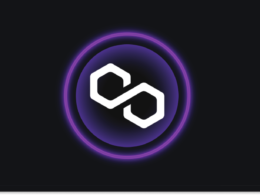Polkadot and Cardano are both two giants in the Defi space. With promising new updates being developed for both platforms, it will be interesting to see which comes out on top. So today, we will be comparing and exploring which of the two cryptocurrencies is better for staking.

The difference between staking Cardano and Polkadot?
There are two ways for staking DOT —by validating or nominating. Validators earn staking rewards by having an active node that they manage daily. Nominators choose the validators and stake the DOT.
Staking Polkadot is done via a mechanism called Nominated Proof-of-Stake (NPoS). The protocol increases security and reliability, making sure networking is running as it should. In comparison, nominators engage in DOT staking and choose competent validators.
Both Nominators and Validators earn rewards in minted coins. The average return is 4-5% after deducing the roughly 10% yearly inflation rate. And the lockup period is of 28 days.

Anyone can be a Nominator, but you need at least 350 DOT to be a Validator.
Staking Cardano (ADA) is, on the other side, quite different. Users get to choose from 2500 staking pools on the approved Daedalus and Yoroi wallets.
But the more ADA is staked, the more rewards diminish. So if a pool has too many people staking, the rewards will be at a minimum. Cardano adopted this mechanism so that validators open up new staking pools and delegates are incentivized to join smaller ones.
The coin has an average staking reward of about 7.5%. It also offers a significant advantage over the competition. Users can withdraw their ADA with no lockup or unlock withdrawal period, meaning investors can take their funds out of the staking pool at any time.
How to stake Polkadot
Staking Polkadot (DOT) can be done through major exchanges, third-party wallets, or the official Polkadot JS wallet. If going with the latter, the general guide below:

- Step 1 — Begin by creating a Polkadot account. Managing your funds is easier if you make a Stash and a Controller account. The easiest way to engage with the platform is to install the Polkadot.js Browser, which users can easily download from Chrome, Brave, or Firefox.
- Step 2 — Once you’ve created the Stash Account, you should do the same for a Controller account. Users will use the Controller Account to nominate validators and perform basic operations. And make sure you leave at least 1 DOT unbounded, or the balance won’t cover the fees.
- Step 3 — Investors that bought DOT in the prelaunch token sale can reclaim their coins. All you need is a Polkadot address, an Ethereum address, and a My Crypto Account.
- Step 4 — Once you’ve checked that the Polkadot main net is working as it should, you can finally start the nomination process.
How to stake Cardano
When it comes to staking Cardano, it is a bit easier. The most convenient way to stake Cardano is through a wallet. First of all, users have to send the ADA to a wallet that supports Cardano, such as Daedalus and Yoroi wallet.
Unlike competitors on Cardano, coins do not automatically get delegated. The process happens in the wallet through a delegation certificate. This makes staking Cardano very simple. All you have to do is choose a pool and confirm the transaction.
Final Thoughts
In terms of fundamentals, both Cardano and Polkadot are great choices. They offer different approaches but are both competing to be crowned the De-Fi king. Cardano offers better returns in the short term, 3.5% more than Polkadot, and no lockup period. Because of this, it may be a better option for short-term investors.
In the end, it’s up to your preference. While staking may seem relatively easy, doing it alone is not. This is why there are staking providers out there to help you get started and smoothly, safely, and securely stake your coins. RockX serves to be one of them, offering high rewards and amazing profitability.









